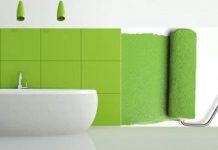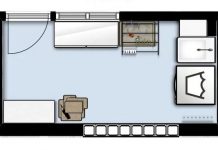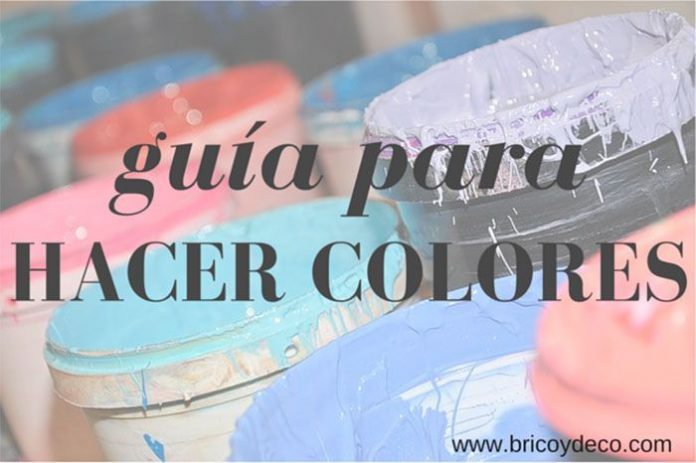
If you want to renovate a piece of furniture by painting it with different colors, you have two options: buy a pot of paint of each color, or buy a pot of white and make paint color yourself using dyes or dyes. The main difference between both options is that with the second one you will save a lot of money.
Imagine that you want to paint a piece of furniture like the one in the following image, for this you will need at least 6 different colors of paint. If we take into account that a small bottle can cost between €7 and €10 and that you are going to use very little of most of them, the renewal is going to be quite expensive.
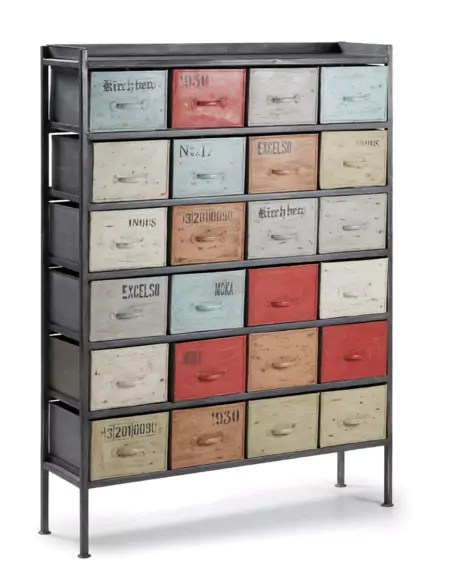
Nevertheless, if you buy dyes and colorants to make yourself the paint color you want, the savings can be considerable Since it must be taken into account that a very small amount of dye is needed to color the paint, in fact, no more than 5% of dye should be added to the white paint.
Are all dyes and dyes the same?
Initially the dyes and dyes can be:
- Powdered: they are usually used to stain cement, plaster, stucco, etc. They can be used to dye homemade blackboard paint (see recipes in this link) or lime paint (see recipe in this link), for example.
- Liquid: to dye acrylic paints, synthetic or both (universal dyes). Universal stains usually have a higher price than water-based stains but they have the advantage that they can be used with any type of paint (water-based and synthetic) and also with varnishes.
What dyes do I need to start creating my own colors
The basic dyes to mix and get new colors are the yellow, red and blue, in addition to black and white. It is also convenient to have an ocher and a brown tint that will help us to nuance the tone, for example ocher will help us to achieve a lighter tone and brown a darker one.
On the other hand, we must bear in mind that if the dye is mixed with white paint, the colors that we will obtain will always be pastels. To get more intense colors, you will have to mix the dye with a colorless base (white glue, for example, one of the ingredients of homemade blackboard paint).
Then I leave you one mixing guide to make different colorsthe number next to each color is the number of parts you’ll need:
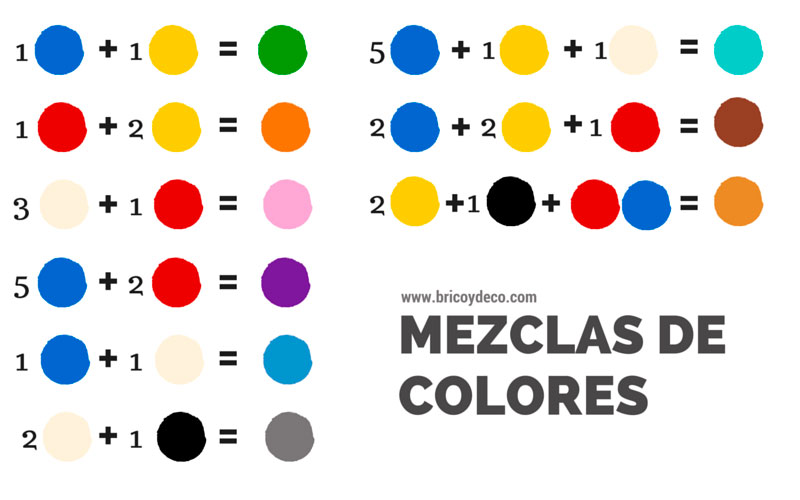
To give greater clarity or darkness to the result of a combination, you should not always add white or black, in fact on some occasions it can give it a “dirty” appearance, so the most successful thing is to increase one of the colors of the combination, for instance:
- Add more yellow on blue to tint the green
- Add more red or yellow to tint the orange
- Add more red or blue to tint the purple
- Add more red to white for a hot pink
- Add more white to blue to get a light blue
- Add more black to white to get a dark gray
Tips for DIY paint color with dye or dye
These tips will help you get it right when preparing your own colors:
- Must be calculate that the color obtained is sufficient to give several coats to the surface that we want to paint Since reproducing the same color again is not always easy, it is better to have more than not. There are dyes with a dispenser that ensure that a specific amount is always used, but they usually have a higher price, so I recommend buying a dropper for each basic dye to better dose the mixtures.
- To make the color you have to add the dye little by littlepouring in the necessary parts and stirring before adding more dye.
- It is convenient frequently remove the color that we have obtained since the dyes usually go to the bottom and it may happen to us that we end up painting with a different color.
- It must be taken into account that the base color of the cabinet that we are going to paint can influence the final color, so it is always advisable to do a small test on an inconspicuous area and wait for it to dry to see how it will finally look.
- Store your color mixes in closable jars or jars (glass for example) to last longer. Also label them with the portion of dyes that you have used to obtain them, in this way it will always be easier for you to reproduce the same color again.
- Paint scraps can also be used to make new color combinations, but bearing in mind that paints with different bases should not be mixed. That is, only water-based or acrylic paints on the one hand and synthetic or oil-based paints on the other can be mixed together.
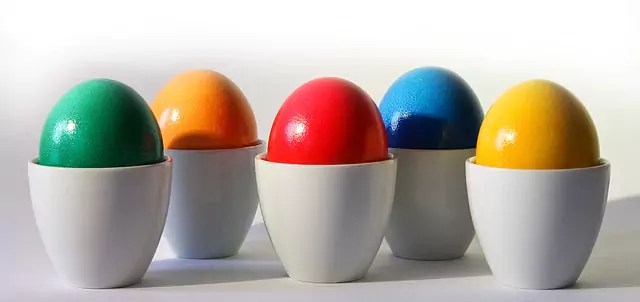
I hope that with this guide you will be encouraged to DIY paint coloryou will see how everything is a matter of practice and little by little you get some nice colors with which to renew your furniture, in addition to saving a lot of money on paint.
If you liked this post, you can see many more practical guides and DIY projects at and learn more at .


